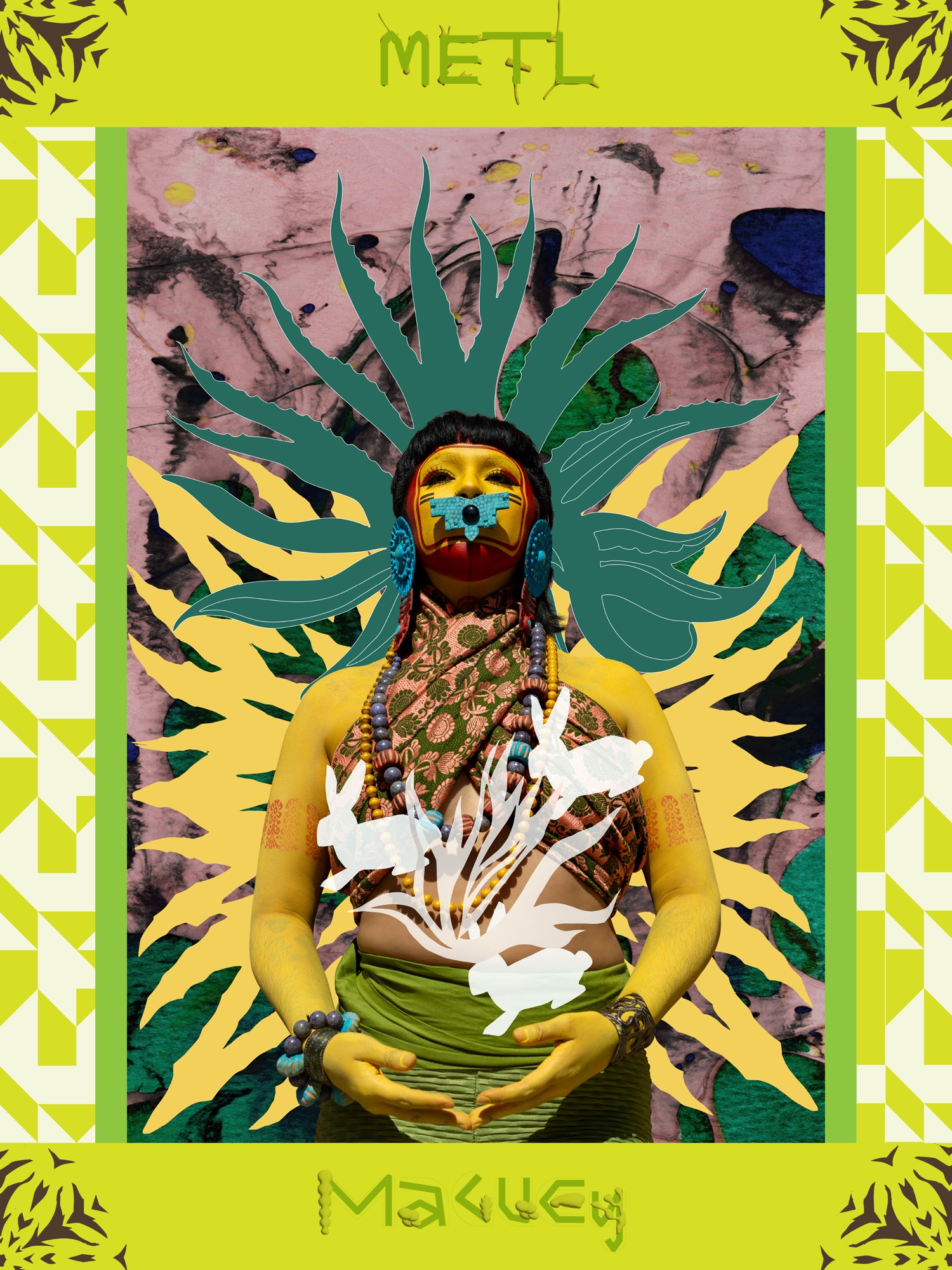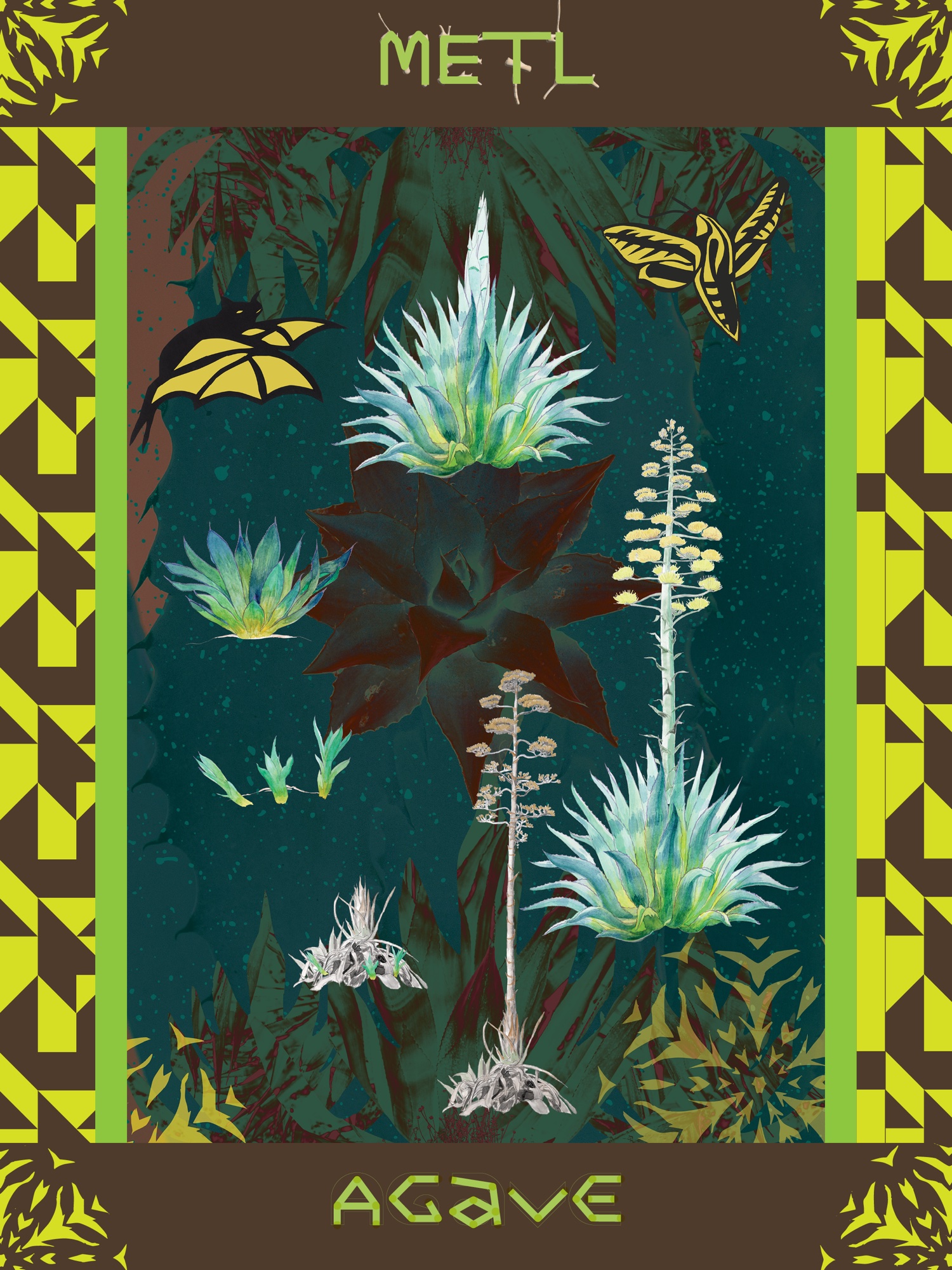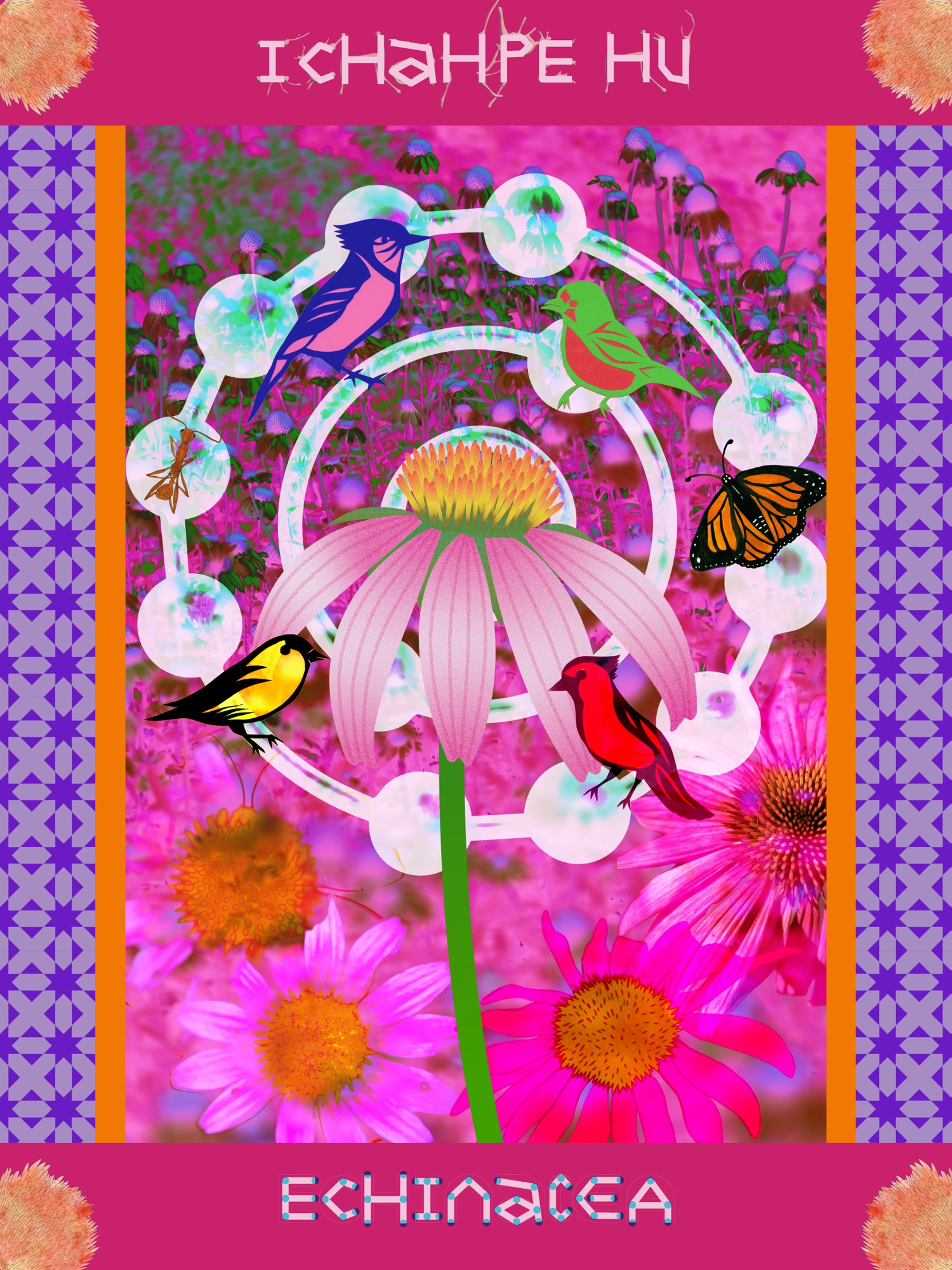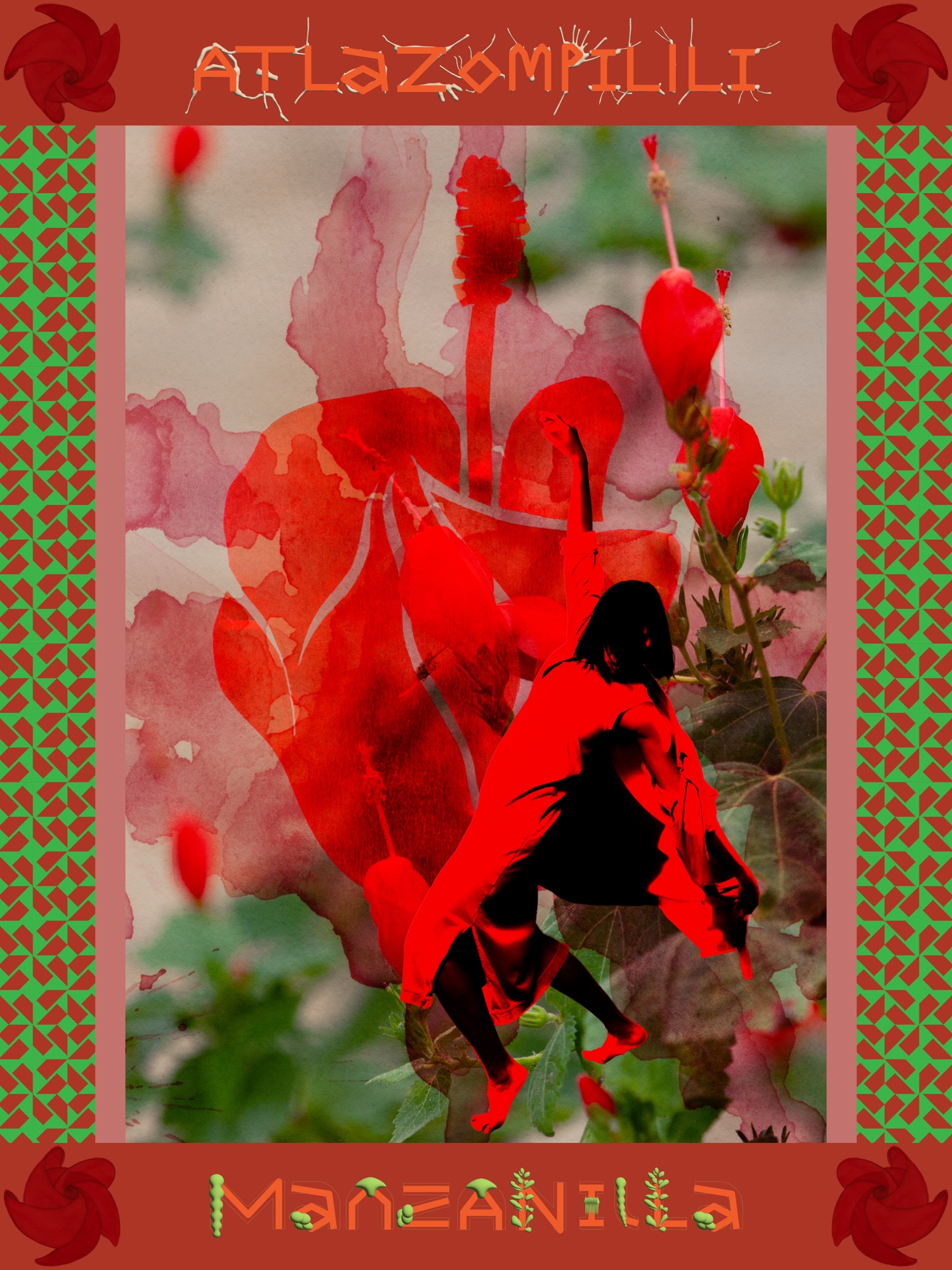
A collaborative multimedia art installation exploring cultural and scientific stories of diversity and interconnectedness through Indigenous knowledge and native plants
About the Project
Rhizomatic is a multimedia tapestry installation that weaves together Indigenous knowledge networks with scientific perspectives on native plants. Each double-sided tapestry presents traditional cultural narratives and botanical information, exploring the concept of rhizomes as a metaphor for interconnectedness across biological, cultural, and spiritual dimensions.
The installation has been presented at two major institutions, Chicago Botanic Garden and Austin Central Public Library, each adapting to the unique context and native plant species of its locations.
Core Themes
Rhizomatic Connections
Exploring networks of knowledge across biological, cultural, and spiritual dimensions through the metaphor of rhizomes - underground stems that grow horizontally and create new connections.
Indigenous Knowledge
Honoring traditional perspectives and wisdom from Indigenous and marginalized communities, centering their understanding of native plants and ecological relationships.
Ecological Interconnectedness
Celebrating the biodiversity and complex relationships within native plant ecosystems, highlighting the importance of environmental stewardship.
Cultural Heritage
Preserving and sharing botanical traditions that connect people to place, history, and ancestral knowledge systems.
Multiple Ways of Knowing
Presenting Indigenous cultural narratives alongside scientific perspectives, demonstrating that different knowledge systems can coexist and enrich our understanding.
Tapestry Designs
Each tapestry explores a Texas native plant through Indigenous cultural narratives and scientific botanical perspectives. Double-sided designs printed on fabric, available in two sizes.


Metl
Agave / Century Plant


Huautli
Amaranth


Snake Grass
Horsetail


Ichahpe Hu
Purple Coneflower


Chiltepin
Bird Pepper


Nochtli
Prickly Pear


Gilzisomashkiki
Goldenrod


Tolin
Cattail


Ponil
Apache Plume


Atlazomilili
Turk's Cap
Past Workshops
Essentials Creative has hosted hands-on creative workshops exploring the artistic techniques behind the installation. Participants learned to blend cultural narratives with visual storytelling while creating their own multimedia artwork inspired by native plants and Indigenous knowledge systems.
Portrait & Collage Workshop
Austin Central Library • October 2025
Interested in hosting a workshop? Contact us
About Essentials Creative
Essentials Creative is a multimedia collective producing holistic applied arts experiences. These multifaceted events incorporate photography, fashion, graphic design, video, projection, animation, and installation.
We create a platform for underrepresented artists to express themselves and find support within their field. We are composed of and embrace artists of color, women, and members of the LGBTQIA community.
Fluidity, diversity, experimentation, and collaboration are the threads that always run through Essentials' projects, no matter the medium.